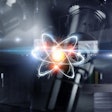Researchers at Columbia University Medical Center are reporting promising results using bone scintigraphy to detect amyloid accumulation in the heart, according to a study published online August 24 in JAMA Cardiology.
The researchers described a technique in which scintigraphy is combined with technetium-99m pyrophosphate (Tc-99m PYP), which gravitates to amyloid deposits in the heart. If successful, the imaging technique could eliminate the need for biopsy for a condition called transthyretin-related cardiac amyloidosis (ATTR-CA), which leads to advanced heart failure.
ATTR-CA is often misdiagnosed, said senior author Dr. Mathew Maurer, professor of cardiology and director of the Clinical Cardiovascular Research Laboratory for the Elderly at Columbia. Avoiding a biopsy to confirm the diagnosis would help frail and elderly patients who most often develop ATTR-CA.
In the study, the researchers retrospectively evaluated 179 patients with ATTR or another form of amyloidosis. Scintigraphy scans were compared with tissue biopsy, which is the gold standard for diagnosing ATTR.
The scintigraphy test correctly identified ATTR in 91% of the patients diagnosed with the disease and ruled out ATTR-CA in 92% of those with other forms of amyloidosis or no amyloidosis.




















